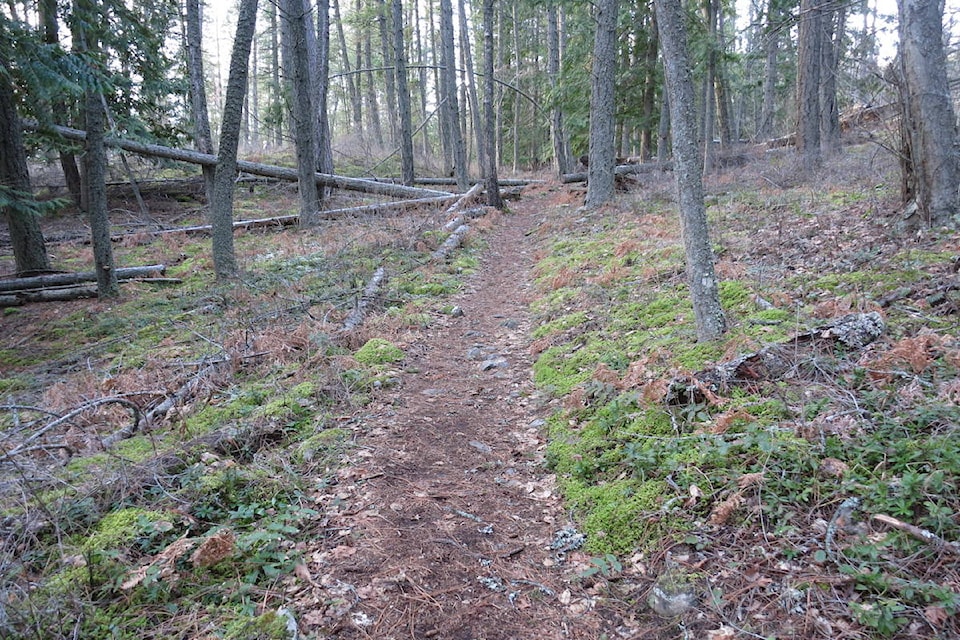“Out There” is a column by Ed McMackin
It’s hard to believe there are still some Kootenay Lake area trails that are pretty much free of snow, that are like “summer trails.” Many trails have varying depths of snow on them, while the Pilot Peninsula Trail, on Feb. 7, had only a bit of snow in shaded areas and on short sections of trail, with a bit of north aspect.
Some trails, free of snow, have been exposed to sunlight and wind and lost the snow that previously fell there. These trails are generally in valley-bottom areas with a very uniform meadow-grass landscape. They are generally flat, which some people prefer, and are found in both the Creston and Crawford Bay areas.
The Pilot Peninsula Trail has a variety of open forest landscapes, with both deciduous and coniferous trees, many shrub species and a ground cover of a number of mosses, and winter-green plants and ferns. The south-west aspect and closeness to the lake are factors that contribute to the lack and/or small amounts of snow. But snowfall after Feb. 19, the time of this writing, may change those summer-like conditions to winter.
Evergreen trees — Douglas Fir, Hemlock, Western Red Cedar, Grand Fir and Western Yew — that lose their leaves one-by-one throughout the year, replacing them in spring, are found along the Peninsula Trail. Western Juniper and Spreading Juniper are found in rock and cliff areas. The two or three cliffs, both above and below the trail, a safe distance from the trail, are over 30 metres in height and provide vistas of Kootenay Lake.
The aspect along the trail that I found most interesting is the ground cover. And, on that day in February, the ground cover particularly stood out against the bare trees, leafless shrubs, and in some spots, a salting of crystalized snow. The forest floor was green and appeared even greener in the sunny spots.
Winter-green, not evergreen, ferns — Parsley, Rocky Mt. Licorice, Sword and Maidenhair Spleen-wort Ferns — blended into the green ground cover of mosses, which grow the most and are the greenest, in fall, winter and spring, even under the snow. The winter-green leaves of ferns will turn brown when the new fronds (leaves) open up in spring, continuing beauty without flowers.
Three plants known as the “winter-greens”, or pyrolas, that added to the greenery were Painted and Green-flowered Pyrola, plus Side-bells. Of course, these plants are not winter-bloomers and actually don’t flower until June and early July.
The Pilot Peninsula Trail is about a 10-minute drive along a road that goes south from the Kootenay Bay ferry landing at Crawford Bay. If the roads from your origin are bare and dry and the snowfall continues to be light, take a sunny-day-drive and tour the Pilot Peninsula Trail, even if you have to wait until spring when the snow is gone. Discover more of its treasures and get some fresh air and exercise in the process.
